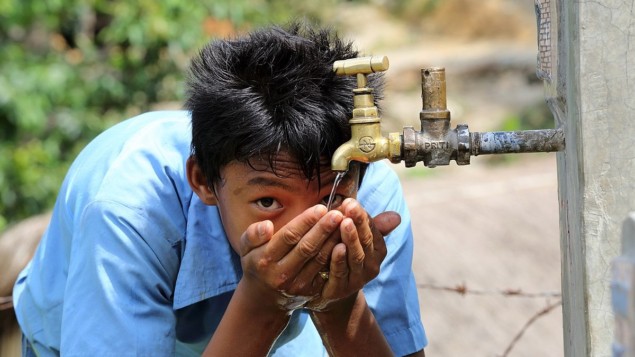Solar-powered harvesters could produce clean water for one billion people
13 Nov 2021
One billion people could access safe drinking water using devices that use solar energy to condense water from the air. That is the conclusion of a team of researchers in the US led by Jackson Lord at X, The Moonshot Factory, who have developed a new tool for assessing the global potential for water harvesting. Their tool could soon help researchers to design completely off-grid water sources, suitable for use in local communities in many parts of the developing world.
The lack of access to safely managed drinking water now affects some 2.2 billion people worldwide. Addressing this serious problem using existing technologies is a key part of the United Nation’s sustainable development goals – with the organization declaring that everyone should have access to five litres of safe drinking water every day.
This could be achieved in some regions using atmospheric water harvesters (AWHs), which draw clean liquid water out of humid air. There are several different types of AWH, and Lord and colleagues focussed on the solar-driven, continuous-mode AWH (SC-AWH). In such a device, heat from sunlight drives warm, humid air through a heat exchanger where it cools and releases water via condensation. Because a SC-AWH operates during the day when relative humidity tends to be low, it has a low efficiency and it had not been clear which locations worldwide are suited for its use.
Geospatial tool
Now, Lord’s team has created a geospatial tool called “AWH-Geo” for assessing the global potential for water harvesting. Based on a Google Earth Engine, the tool uses data from ERA5: a database containing a vast number of historical climate observations going back to 1979. To assess the varying outputs of atmospheric water harvesting in different regions, AWH-Geo considered a location’s sunlight irradiance, its relative humidity, and its average air temperature. In addition, the tool accounted for annual variations in these parameters.
The team also looked at the global distribution of people without access to safe drinking water, using data from the World Health Organization and UNICEF. Combining this with AWH-Geo output, the researchers showed that atmospheric water harvesting could realistically provide five litres of safe drinking water for some one billion people worldwide.
This is based on the use of a hypothetical SC-AWH with a harvesting area of 1 m2. The team calculates that such a device could yield between 0.2–2.5 l of water per kilowatt hour of primary solar energy when operating at a relative humidity range of 30% to 90% and average air temperature of 20 °C.
The researchers are now developing such a device and with technological improvements, they believe it could provide cost-effective, completely off-grid access to high quality drinking water for many communities in the developing world. The researchers will now continue to use AWH-Geo to guide the development of new types of water-harvesting devices – with the ultimate aim to bring the UN’s goal for clean water a step closer.
The research is described in Nature.
Sam Jarman is a science writer based in the UK
from physicsworld.com 13/11/2021

Δεν υπάρχουν σχόλια:
Δημοσίευση σχολίου